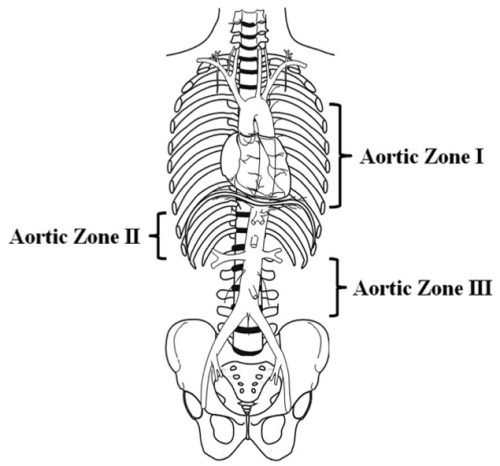Patients with blunt abdominal injury, particularly those with seat belt signs, can be diagnostically very challenging. If the patient is stable and does not have peritonitis, CT scan is typically the first stop after the trauma resuscitation room. As many trauma professionals know, the radiographic findings can be subtle and/or not very convincing.
The trauma group at the University of Tennessee in Memphis sought to identify specific findings that might help us better identify patients that will need laparotomy. They retrospectively identified all their mesenteric injuries over a five-year period. A single blinded radiologist (is this an oxymoron or not?) reviewed all 151 patient images who underwent laparotomy, looking for predictors of bowel or mesenteric injury. All of the predictors were then converted into a scoring system called RAPTOR (radiographic predictors of therapeutic operative intervention; kind of a stretch?). These predictors were then subjected to multivariate regression analyses to try to tease out if there were any independent predictors of injury.
Here are the factoids:
- A total of 151 patients were identified over the 5 year period; 114 underwent laparotomy
- Of the 114 operated patients, two thirds underwent a therapeutic laparotomy and the other third were nontherapeutic
- There no missed injuries in the non-operated patients
- The components of the RAPTOR score were culled from all the potential findings, and were determined to be
- Multifocal hematoma
- Acute arterial extravasation
- Bowel wall hematoma
- Bowel devascularization
- Fecalization (of what??)
- Free air
- Fat pad injury (??)
- Linear regression then showed that only three of these, extravasation, bowel devascularization, and fat pad injury to be independent predictors of injury
- If three or more RAPTOR variables were present, then the sensitivity, specificity, and positive predictive values for injury were 67%, 85%, and 86%, and an area under the receiver operating characteristic curve (AUROC) of 0.91
The authors concluded that the RAPTOR score provided a simplified approach to detect patients who might benefit from early laparotomy and not serial abdominal exams. They go further and say it could potentially be an invaluable tool when patients don’t have clear indications for operation.
It looks like there are two things going on here at the same time. First, a new potential scoring system is being piloted. And second, a regression analysis is being used to examine the data as well.
But first, let’s back up to the beginning. This is a retrospective study, with a relatively small size. This makes it far harder to ensure that the results will be significant, or at least meaningful. Use of a single radiologist can also be problematic, especially since many of the CT findings with this mechanism of injury are subtle.
The reported performance of the RAPTOR score is a bit weak. The listed statistics show that it accurately identified only two thirds of those who needed an operation and 85% of those who didn’t. The AUROC for the regression is very good, though. Could a good old-fashioned serial exam scenario be better?
Bottom line: It will be interesting to hear the background on RAPTOR vs regression, and find our how the authors will use or are using these tools.
Here are my questions for the presenter and authors:
- Why did you decide to create a scoring system that uses a set of variables that may be dependent on each other? Isn’t the regression equation better?
- Has this information changed your practice? It seems that the two of the three regression variables are fairly obvious reasons to operate (active extravasation and devascularization). Do you really need the rest?
- Has this study helped you decrease the non-therapeutic laparotomy rate for blunt abdominal injury?
- And please define fecalization and fat pad injury!
I’m looking forward to hearing this presentation!
Reference: RADIOGRAPHIC PREDICTORS OF THERAPEUTIC OPERATIVE INTERVENTION AFTER BLUNT ABDOMINAL TRAUMA: THE RAPTOR SCORE. AAST 2019 Oral Paper 6.



